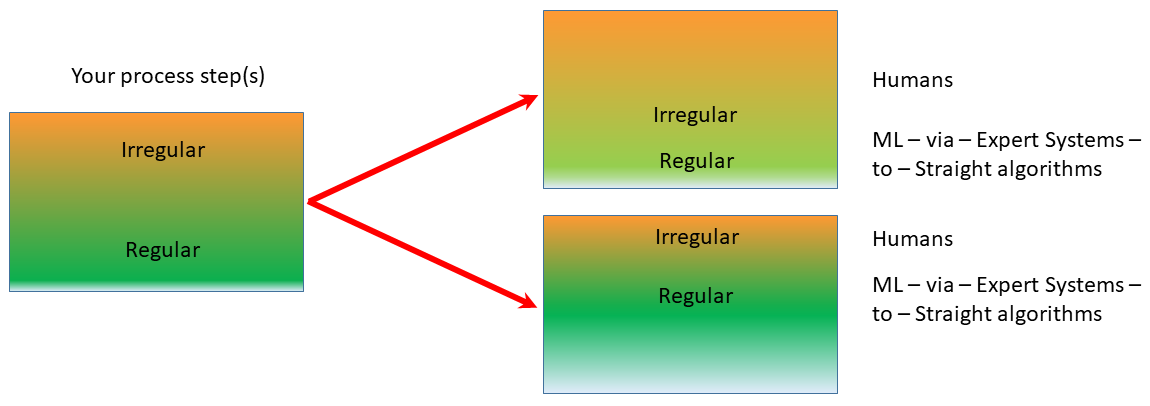This, about the trend to see play time being over and serious business resuming; with ML.
Where no longer, one just let some business-newbie just out of college (or less) play with a bricks set of tools including a minute subset of all relevant vectors [i.e., a tiniest sliver of context], and then have … Tadaaa! A proof of concept, at best. Now, let’s see how small a part in might take in regular business operations — don’t transform your business too much because that might undo the relevance of rules learned ..! Even when ‘AI translators’ come into fashion, they still take things bottom-up more than they dare to admit, still with an ML focus first, seeking anyplace suitable to deploy it and hence reaping point soultions at best.
Where rather one would want to take things from the other side. Top-down. Maybe not all the way from the top, as insights aboot ML may not live there, and insights about how the business is run, also not [quite completely not, often].
But somewhere-middle-out, where some may understand how the business is run. And where process mining may help to understand what actually goes on, and then plot the following:

to see that a lot of processing in any process step would be repetitive, fetchable-in-an-algorithm-of-some-kind [1] simple data handling, plus a degree of human intervention and deviation based on ad-hoc intelligence applied.
Yes, ‘if any’. But also pointing to this piece on the long-awaited, longed-for demise of ‘six sigma’ and its dehumanising characteristics/effects.
So you can choose which process (step/steps) would lend themselves best for possible (sic) disruption by ML-application of some sort.
The some sort of which you then need to figure out. And also see how the ML (possibly/probably no more than) bits fit into a new, redesigned process. Yes, ML may make sense, to a degree to be ascertained, but humans may need to change – luckily for you, the dot on the horizon, which should be waaayyy before the horizon, is for humans to be rid of the mundane stuuf and to be tasked onto the Intelligent stuff. IF empowered, enriched.
So, in the end, hybrid processes may be a thing to aim for; want.
Plus:

[Artes and Ciencias; Valencia]
[1] The bandwidth of classical algorithms, expert systems, Big Data correlations, classifier ML, more-complex ML, basic neural nets, complex neural nets, evolutionary algorithms [or are they a separate, close but parallel track?] as explained in this.

One thought on “Analysis first, data analysis later”